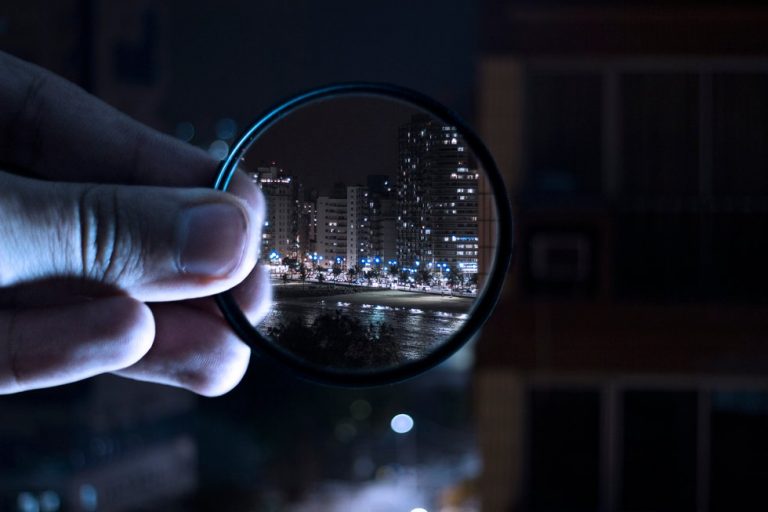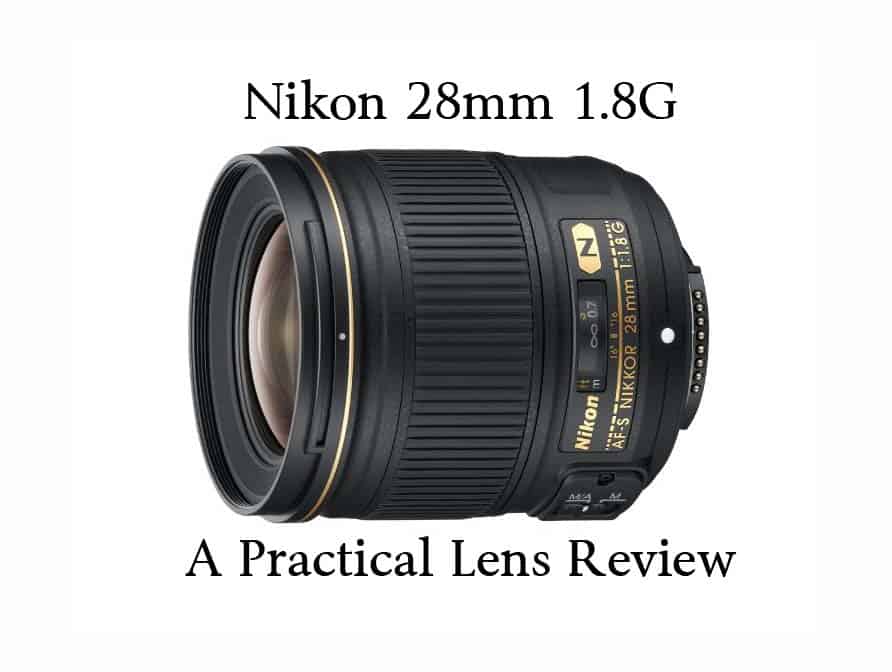High Dynamic Range photography (HDR photography) is a popular technique used to capture a wide range of lights and darks. Essentially, it alters a photograph’s dynamic range.
The dynamic range is the complete spectrum of light and dark in a photo. Different types of cameras have different ranges. When the camera can’t accurately capture the HDR of a subject, two distinct features appear in the resulting photograph:
- The light sections of the photo will wash out, so they appear white
- The dark sections of the photos will lose all definition, so they appear as black blobs
HDR photography allows your photographs to display more detail from both highlights and shadows. It removes both the washed-out whites and the dark blobs.
How Two Images Turn Into One
Capturing dark blacks and bright whites in the same photograph is difficult, if not often impossible. An HDR photo combines two images into one.
There are two potential methods used to combine two images into a single HDR image:
- The camera can combine the images
- HDR software combines the images
Most modern cameras allow you to combine two or more images to create an HDR photograph. While using a camera is convenient, many models can’t capture the full range of contrasts, especially if the image includes both bright whites and dark blacks.
The best HDR software also combines two or more images to allow for a wide dynamic range. It offers far more control over the merging process compared to what’s possible with a camera. Additionally, the best HDR programs offers a wide range of options to adjust the appearance of the image.

What Does the Best HDR Software Actually Do?
While the best HDR software combines images, it also does much more. Although specific features vary, you’ll typically want software with the following best features:
- Noise Reduction
- Tone Mapping
- Ghost Removal
- Image Alignment
Let’s take a closer look at each:
Noise Reduction
A variety of mechanical and technical issues can sometimes result in noise, which is a photography term for a graininess that can obscure detail and image quality. When combining multiple raw files, random noise has multiple opportunities to appear. HDR software helps remove noise from raw files to clarify the HDR images.
Tone Mapping
The original two images each have a high dynamic range that needs compression into a normal range. Unfortunately, when you compress an image from a high to low range, it creates a flat look due to a lowered contrast.
Tone mapping helps remove this flatness by re-mapping the histogram and increasing the mid-tone contrast. It helps add depth to the raw files.
Ghost Removal
As light enters your camera, it can sometimes bounce through various components to create lens flare, which results in bright, circular halos, often referred to as ghosts. While you want to take steps to reduce the likelihood of ghosts when shooting, the best HDR software can help remove them later.
Image Alignment
Even if you’re an expert photographer, capturing two images that overlap perfectly is difficult. While you want to try your best to align your subjects when shooting, HDR software is often an invaluable tool to help refine the alignment of the raw files precisely.

Best HDR Software on the Market
While all HDR software operates in the same basic way, the specific type of software does make a big difference in its overall capabilities. Here’s a look at the pros and cons of the most popular types:
[amazon table=”634681″]
Luminar 4
[amazon link=”B081ZV1YL9″ title=”Luminar 4″ /] is an AI-powered powerhouse that can tackle the toughest HDR editing jobs. Its standout feature is the AI Sky Replacement, which lets you replace the color of the sky with a click.
Of course, AI isn’t the solution to everything. Luminar 4 allows you to get as hands-on as you like with editing tools, layers, and other professional-level features.
Pros:
- Full integration with Photoshop, Lightroom, and others
- Unique AI Sky Replacement feature
Cons
- The user interface is often confusing to navigate
[amazon box=”B081ZV1YL9″ template=”horizontal”]
Adobe Lightroom
Photoshop is a powerful tool, but it’s complex and difficult to master quickly. If Photoshop feels a bit too daunting to dive into, but you still want a powerful photo editing tool, consider [amazon link=”B07R1DMQ4Q” title=”Lightroom” /].
Lightroom is a multi-functional image manipulation tool with a wealth of options for HDR. You can merge photos and edit them to create powerful HDR images. Everything from uploading images to merge them into a final product is quick and intuitive.
Pros:
- Photoshop-level power in a simpler, more user-friendly format
- Multi-function image editing with an emphasis on HDR images
- Easy and fast uploading capabilities
Cons:
- Limited dynamics
- Some tools create an unrealistic look
[amazon box=”B07R1DMQ4Q” template=”horizontal”]
Aurora HDR
Another excellent option is [amazon link=”B07T3BW4Q3″ title=”Aurora HDR” /] with a Quantum HDR engine. If the user interface of Photomatix Pro feels too complicated, you’ll likely prefer Aurora HDR, which has an intuitive design that’s welcoming to new users.
The Aurora HDR software doesn’t have presets. Instead, it lets you pick from eight Looks such as Architecture, Essential, and other themes. Creating the images you want is easy thanks to the multiple Quantum engine, sliders, and other customization options.
Aurora is one of our top HDR player Mac and PC picks.
Pros:
- Simple, intuitive interface
- Includes eight Looks for easy customization
- Allows you to process single images or batches
- Quantum engine
Cons:
- It doesn’t include many image editing tools

[amazon box=”B07T3BW4Q3″ template=”horizontal”]
EasyHDR
If you’re just starting to get into HDR images, EasyHDR is a solid choice. As the name implies, it’s easy to use and beginner-friendly. The user interface has lots of visual feedback to help you navigate the features and accomplish your goals.
On the downside, the program is relatively limited compared to many competitors. You won’t find the same depth of features. However, it has what you need if you’re a beginner.
Pros:
- Easy to use
- Provides visual feedback
- High-quality rendering
Cons
- Limited features compared to similar programs
Adobe Photoshop
[amazon link=”B07X8Z3CV7″ title=”Photoshop” /] is one of the most popular and powerful image editing software programs in the world. It offers a host of features and tools, including two HDR tools.
Should you use Photoshop or Lightroom? Photoshop is the more powerful option, but it’s also complicated to learn. If you’re new to this type of software in general, you probably want Lightroom. However, if you’re willing to take the time to explore the software, Photoshop gives you greater command over your retouching needs.
Pros:
- Powerful image editing features including two HDR tools
- Ability to install a variety of useful mods
- Excellent ability to remove ghosts and blurring
Cons:
- Steep learning curve
[amazon box=”B07X8Z3CV7″ template=”horizontal”]
Photomatix Pro
Our favorite option is [amazon link=”B002CIP12U” title=”Photomatix Pro” /] from UK-based HDRSoft. Photomatix Pro is one of the first HDR software to launch, making it popular among pro photogs. Although the Photomatix product and company are well-established, they remain committed to staying on the cutting edge with each new version.
The Photomatix software includes an HDR batch processing plugin, 40 built-in presets, advanced ghost removal options and more.
Pros:
- Photomatix is a trusted name in HDR tech
- Includes Lightroom integration
- Excellent ghost removal
Cons:
- Photomatix Pro might feel overwhelming to new users
[amazon box=”B002CIP12U” template=”horizontal”]
HDR Projects 7
Not everyone needs the most complex software. HDR Projects 7 is simple, easy, and intuitive. You’ll have no problem creating good-looking images. Plus, the software encourages exploration, making it a helpful learning tool.
Pros:
- User-friendly
- Simple, intuitive design
- Includes Adobe plugin
Cons:
- Limited features
- Not ideal for commercial applications
Oloneo HDR
H D R software doesn’t have to take a long time to generate results. If you have a need for speed, you’ll want to check out Oloneo. It’s one of the fastest options available.
You can view all modifications in real-time, which gives you a high degree of control over the output. Also, the Natural HDR mode is ideal for editing outdoor photos.
Pros:
- Fast processing speeds
- Natural HDR mode ideal for nature photos
- You can view edits in real-time
Cons:
- Doesn’t remove sharpness
HDR Expose 3
HDR is a common technique for nature photography. If you’re interested in taking great pictures of the great outdoors, you’ll want HDR Expose 3. It’s specifically designed for taking pictures of landscapes with natural light.
However, it’s important to note that the program’s greatest strength is also its main weakness. The program only works well with nature photos. If you’re looking to create a surreal effect, this program isn’t a good fit.
Pros:
- Ideal for nature images
- Removes ghosting
- Easy alignment functions
Cons:
- Importing photos can seem complicated
- Not ideal for indoor photos
Capabilities of HDR
It’s important to have realistic expectations about the capabilities of HDR software. The quality of your photo still heavily relies on composition, lighting, and your overall skill as an amateur or pro photographer. The right HDR software can refine and augment your existing photos, but you’ll need to capture great shots on your own.
Additionally, it’s important to know that even the best HDR software initially creates a flat image. Unless you’re aiming for a specific effect, you’ll need to implement tone mapping on every image.

What HDR Software Doesn’t Do
Don’t expect HDR software to work as a filter on your phone. It takes more than a simple click to apply changes. You’ll have to experiment and tweak settings to achieve the results you want.
Additionally, don’t expect to learn many of the high-end products overnight. Photoshop, Photomatix, and others are complex programs. You’ll need to put in practice time, and accept that learning some of the more complicated techniques might feel frustrating at times. Fortunately, completing basic HDR tasks is usually fairly simple, even if you’re not a pro.
Final Thoughts on HDR Software
Is there one type of HDR software that’s the absolute best? Not really. Adobe Photoshop, Photomatix Pro, Adobe Lightroom, and Aurora HDR are often considered the four most powerful programs, but all of the products listed above have lots to like.
If you’re looking for a simple way to create HDR images, you’ll find many quick-and-easy options above. However, if you want total control of your image, more than a few high-end products can deliver the goods.
Consider the types of photographs you like to take, plus your overall technical skill using photo editing software, and you’ll have no problem finding the right HDR software for your needs. Take your HDR images to a whole new level!







